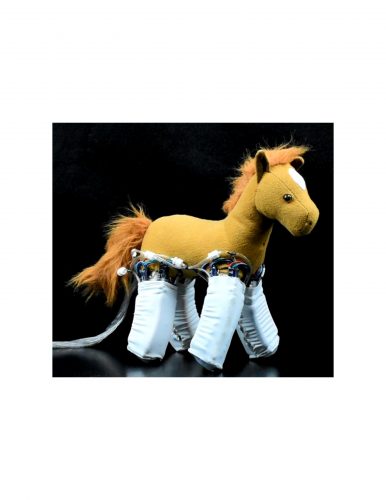What if there existed a gadget that could take an inanimate object and turn it into life? Researchers at Yale have been imagining and working on robotic skins that do just this. Rebecca Kramer-Bottiglio, Assistant Professor of Mechanical Engineering & Materials Science at Yale, and her lab, the ‘Faboratory,’ have developed flexible robotic skins capable of producing a wide range of customizable functions. These skins can be wrapped around surfaces and objects to animate them in several different ways.
Kramer-Bottiglio first came up with the idea five years ago when NASA requested research on flexible robotic systems. Generally, robots are built to perform single function; however, each individual robot often takes up large amounts of volume and mass. With the help of funding from NASA, the Faboratory aimed to create light, compact robots that could be reconfigured for different tasks, as weight and size are vital concerns for outer-space travel. The solution? Flexible, planar robots, called OmniSkins, that allow objects to be transformed into versatile robots.
The OmniSkins are made up of a system of actuators and strain sensors. The set of actuators controls how the skins act and move when attached to an object. The strain sensors detect length and provide feedback; the change in length of the actuators, when changing the shape of the skin, is picked up by the strain sensors. When wrapped around a soft object, the robotic skins can manipulate the material to achieve a desired motion or task.
What exactly do these robotic skins offer over conventional robots? According to Jennifer Case, a doctoral candidate at Purdue and Yale doing research in the Faboratory, there are two primary ways to assess a robot. One way is to measure how well a robot can do a specific task. However, the OmniSkins are not built with a single purpose in mind and are not specialized for a single task.
“We’re not saying that that these skins are necessarily better at performing these tasks. A grasping robot can grasp better than the skins can,” said Case, explaining that extreme specialization was not the primary goal of the project. For mechanisms that require increased precision, conventional robots win the round. The second assessment though is how many tasks a single robot can do. Unlike most conventional robots, the robotic skins can undergo more than a single function. OmniSkin’s versatility is unique as it allows for any soft object to become a robot. For this metric, robotic skins beat out conventional droids.
In addition, the robotic skins are planar, 2-dimensional machines, meaning that they are much more compactible and generally lighter than most standard robots. The robotic systems are also relatively easy to construct from the OmniSkins as they simply need to be wrapped around a soft surface to perform the tasks. These positive traits can benefit NASA and their space endeavors, as the versatility and compactible nature minimize volume and weight in a spacecraft.
Currently, Kramer-Bottiglio and the Faboratory have two primary goals in advancing with the OmniSkins, according to Dylan Shah, a doctoral candidate at Yale working in the Faboratory.
First, the lab wishes to enhance current capabilities so that the robotic skins can move more precisely. Currently, the OmniSkins have a great deal of versatility, which contributes to a lack of precision within certain functions. The Faboratory aims to modify the robotic skin in a way that the skins can become more precise, yet retain their extreme versatility. Finally, the lab wishes to make the skins more adaptable to changes in movement.
“We want to actually be able to sculpt and adapt materials inside the skin,” said Shah. “We want robots that can change structure though time.” Currently, when skins are applied to an object, they remain stiff and stay in the desired position. However, the Faboratory wishes to make the robotic skins more adaptable to movement so that the material can change its shape when in use.
Kramer-Bottiglio’s OmniSkins serve many benefits over conventional robots. From animating plush horses to grasping objects, these robotic skins challenge the expectations of the modern robot. With increased precision and versatility, these skins will have the potential to serve an even wider range of purposes in space and on Earth.

